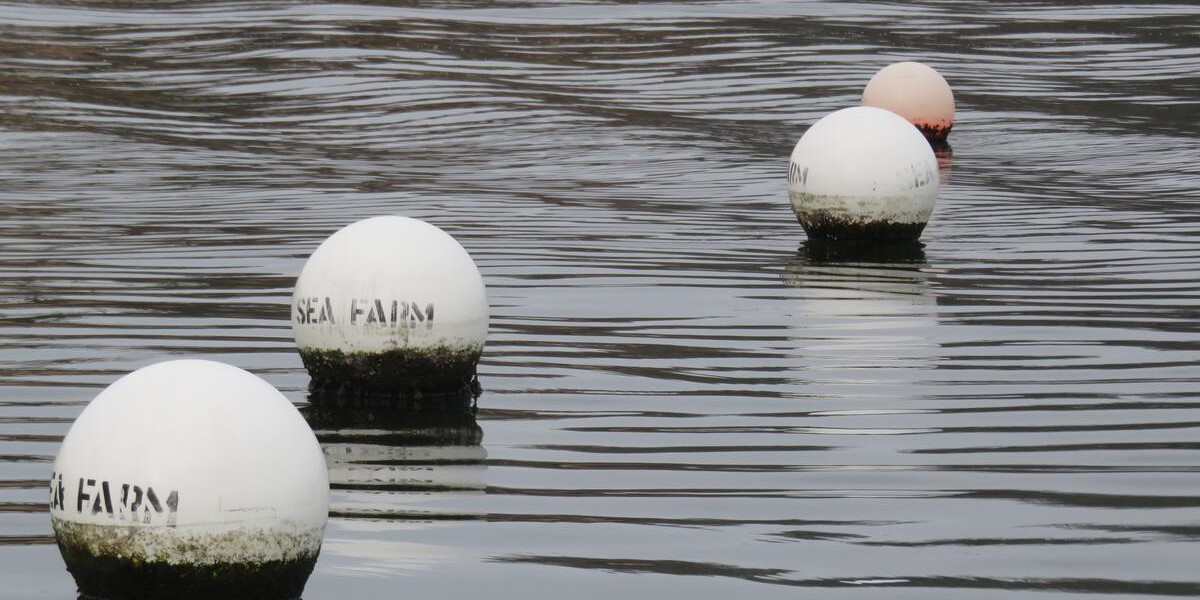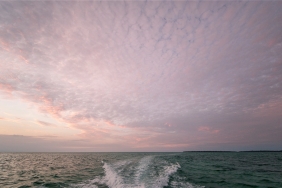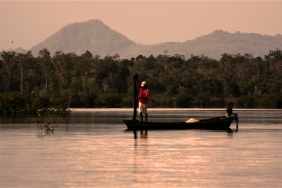MOORING BUOY, THE LITTLE SAVIOR OF KOMODO NATIONAL PARK
By: Indarwati Aminuddin (Responsible Marine Tourism Coordinator, WWF-Indonesia)
For the 7052.97 square kilometers of West Manggarai Sea, 19 mooring buoys seem insignificant. But ask the 300-plus boats that travel back and forth within Komodo National Park. The mooring buoy is an important tool for boats to indicate where to drop anchor. Round, orange and gray in color, the little mooring buoy can save coral reefs from being hit by anchors.
Unfortunately, during the tourist season the number of available buoys is not proportional to the number of cruise ships arriving. Some are lost due to currents, others are lost due to people's pranks. As a result, many cruise ships that do not get to drop anchor just like that without taking into account the impact of the anchor on the ecosystem at sea.
Given the importance of mooring buoys in reducing pressure on coral reefs from anchors, WWF-Indonesia, Dive Komodo and Komodo National Park have initiated maintenance and replacement of mooring buoys in a number of target locations. Initial surveys were conducted in 2012 at sites with high conservation value (HCV), such as Loh Buaya, which is the target of tourists who want to see Komodo dragons (Varanus komodensis) and Manta Reef, a dive spot that offers manta rays and sharks for divers. The survey results became the starting point for WWF-Indonesia's mooring buoy program in collaboration with Dive Komodo and the Komodo National Park Office, which began in November - December 2013.
In August 2014, further mooring buoy surveys were conducted at Loh Buaya, Kalong Island, Pantai Merah, Kambing Island, Gili Lawa, Gili Lawa Teluk, Gili Lawa Laut, Gililawa Strait and Loh Liang. Survey reports show that a number of mooring buoys are missing, mooring buoy chains have rusted and shifted and mooring buoy ropes have broken. There were no official reports of missing buoys except for rumors of 'lost and taken'. While the damage indicates the mooring buoy is not able to serve the power of ships with large Gross Ton (GT) values.
Smart Practices: Engage Tour Operator
Although they look small, mooring buoys are not cheap devices. Purchase, installation and maintenance are all costly... How to reduce the risk of loss and damage of mooring buoy? Who should be responsible for maintaining it?
In response to these challenges, WWF-Indonesia together with Dive Komodo and Komodo National Park initiated the Voluntary Mooring Buoy Program. In this program, dive operators are involved to perform maintenance every four months on the installed mooring buoys. A number of dive operators even participated in installing 8 mooring buoys and committed to participate in maintenance. "This has to be our responsibility," said Greg Heighes, Coordinator of Dive Komodo, one of the dive and cruise operators in Labuan Bajo.
"Maintenance of mooring buoys is recommended to be routinely carried out once every four months to reduce the risk of malfunctioning supporting devices such as chains or anchors. With such routine maintenance, it is expected to reduce unexpected costs," said Jan Manuputty, a staff of WWF Indonesia.
M. Ihya Syari'udin from Komodo National Park, said, "The National Park supports this program. It is a good idea to involve dive operators in the supervision, installation and maintenance of the buoys.". Although it doesn't fully promise that the mooring buoy is safe from loss, at least the smart practice with dive operators has helped the little mooring buoy not be alone in facing difficult situations in the middle of the ocean. It has also encouraged tourism businesses to play their part in protecting Komodo National Park from damage.
The next homework is to ensure sustainable financing for the mooring buoys. Who should be responsible for ensuring the availability of funds?
Notes:
- Mooring buoy is a floating mooring used for mooring ships, and as a marker for dropping anchors. Mooring buoy is designed to be operated quickly with the unit consisting of an anchor, anchor chain, mooring gear, rigging.
A total of 11 mooring buoys have been installed by the end of January 2014 and 8 mooring buoys in February 2015, so there are currently 19 mooring buoys installed at 19 points within Komodo National Park.





